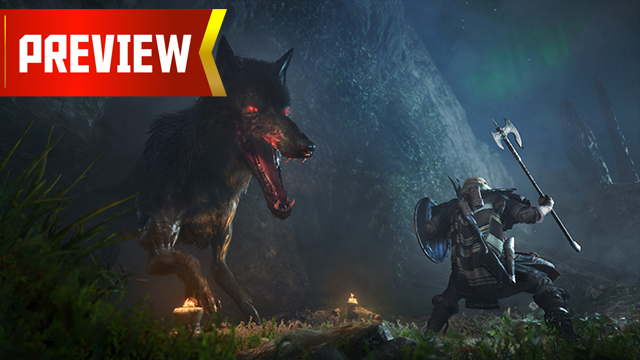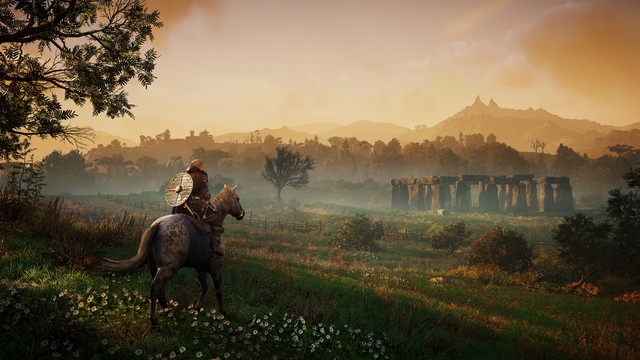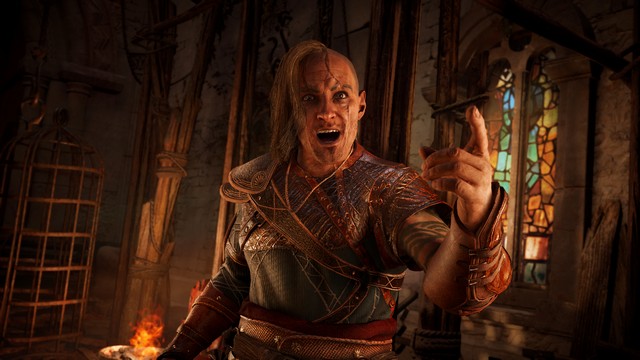Ubisoft Montreal’s Assassin’s Creed Origins was an excellent example of how a series can refresh itself a decade after its debut. Now in 2020, the team has been tasked with iterating on that formula it helped create with Assassin’s Creed Valhalla. Odyssey tried to do just that and was more of a backwards lateral step. Valhalla seems poised for a similar amount of stagnation and if Odyssey was a Greek repeat, Valhalla might be a Viking that’s just not that striking.
That’s not to say it’s a complete reskin of Origins or Odyssey, even if they have a similar foundation. Ninth-century England is a pretty green locale with the sort of wooden and stone architecture that seems honest to the place and time period. The Nordic touch from the characters also brings in a slightly unique flavor, given their culture and attire that’s even more apparent in your settlement. Everything from their longships to their armor and hairstyles evoke a different feeling from the cultures in the other games. Honing in on the specificities of each civilization like this is usually one of the highlights of every installment.
Putting on the same ol’ Assassin robe
Yet it still doesn’t appear to overcome the law of diminishing returns as many of its systems are just continuations or slight refinements of those that came before. Combat fares the best as it’s a solid mix of Origins’ defensive play and Odyssey’s rushdown, ability-centric style. It finds a decent middle ground, even if its dual-wielding system isn’t a noticeable improvement. Bashing people with two shields is funny, but it isn’t yet clear how having an axe and a hammer is all that different from having two axes.
Many of the other systems are almost exactly the same or only barely tweaked. You can teach your horse to swim. The skill tree is absolutely massive to the point of being absurd and hard to follow. The bird pinpointing mini-game is somehow less tedious but more vague.
Raids are akin to forts that you can invade with your fellow Vikings, but don’t seem fundamentally different as it’s like a mix of those aforementioned forts and Odyssey’s superfluous Conquest battles. Zealots are essentially Origins’ Phylakes that mercilessly track you down. These minor changes, along with a few others, point out how iterative the game is or how some aspects are just different just for the sake of it. It doesn’t seem to be stepping up in the same way that Ubisoft’s other games like Watch Dogs Legion and Immortals: Fenyx Rising are.
Stealth is one of the bigger sources of this feeling since it is basically unchanged and appears to have all of the same tools as before. Expect to crouch walk around some tall grass, climb up high, use your bow, and then stab a few people in the back without much in the way of new variables. The time period may be limiting in that regard, but that setup could use some innovation to make sneaking a thrilling part of the equation and not just a well-worn means to an end.
A familiar world
Traversing around England also feels like a means to an end because of how familiar it looks. England does look beautiful with a few its own appropriately English touches, but it isn’t all that different from Odyssey’s Greece in practice. A European countryside can only have so many trees and mountains before it starts blending together other European-esque countrysides from other games like The Witcher 3 or Assassin’s Creed Odyssey. Ubisoft has shown some more unique areas like snow-capped peaks soaked in northern lights, mythical realms, and more so hopefully its diversity shines after the map reveals itself.
Part of this may be a symptom of how massive the game is as green landscapes do wonders in filling out the empty space between notable areas. Sparsely populated fields are part and parcel with many open worlds, as unfortunate and uninspired as that often is. Odyssey was bloated beyond belief so Valhalla better not be trying to one-up it in that regard.
Connecting the dots
But Valhalla isn’t as crammed with repetitive bandit camps and appears to have more variety hidden within its many mysterious color-coded dots. Dots replace question marks and have three categories: wealth, artifacts, and mystery. Wealth icons are usually chests that can yield loot, supplies, or new abilities. Artifacts are nebulous odd trinkets. And mysteries are pretty much everything else, which mainly amount to various types of side activities and missions.
Each dot color has a fair amount of variation so you won’t know exactly what you’re going to get until you stumble upon it. For example, a mystery may be some mission surrounding a pair of lovers and their dangerous sexual foreplay or it could be an offering pillar or some sort of mysterious Animus puzzle. Valhalla hasn’t gone too far into Breath of the Wild territory — these are still very much things on a checklist — but it is a very small step into injecting a little bit of surprise into the world that the series could always use more of.
Exploration mode is also back in some form as missions, at least in the demo, were sometimes doled out with clues rather than outright objective markers. It didn’t seem like much of an upgrade or something you could play by only listening to context clues, but, like the dots, it is better than mindlessly being led by the nose. Thinking about where to go or following your intriguing is always more engaging than running there in a straight line.
Odyssey inched toward being more explorable but that notion was undermined by its RPG systems that more or less dictated where you could and couldn’t go. Valhalla does away with leveling but it is not clear how much that actually removes the red tape. Zones have recommended power levels that you can raise by getting better gear and abilities. The skill tree is also littered with stat boosts as well as new moves.
The demo didn’t allow travel to most of the zones, but it’s hard to tell if these systems are just level-gating with a different name. If an area has a power level of 250, how is that different than it being it having an area with enemies that are a higher level than you? Ubisoft has been open about learning from Odyssey and the troubles that come from having loot and leveling systems so it’s up to the full experience to prove that.
Potentially problematic pillagers
The aforementioned raids are one of those activities that also needs to prove itself. Raids see you and your Viking brethren descend upon a small settlement, strip it of its riches, and kill whomever gets in your way. Burning the houses is optional. Vikings have a rather negative reputation that comes along with them and Ubisoft has tried to explain that there is more to the group that pillaging and conquering.
But the game seems fairly uninterested to explain why you violently tear through these places full of seemingly innocent people. Sure, there are bloodthirsty guards there, but they are right beside farmers and normal folks who probably don’t deserve you wrecking their life for some gold and a new sword. The game is in dire need of context because it seems hypocritical to paint them as well-rounded beings without delving into their bad sides, too.
Assassin’s Creed Valhalla needs more context in order to ease concerns around its raids and leveling systems, but that sentiment extends to many of the other parts of the game as well. Its systems, open world, and overall structure aren’t markedly better or different, at least without the luxury of being part a completed whole. Even with its shortcomings, Valhalla is shaping up to be a decent entry in the series since its coming from such a tried-and-true base. But given its Viking setting and impressive predecessors, it would be a true disappointment if it didn’t aspire to be something more than just another Assassin’s Creed.











